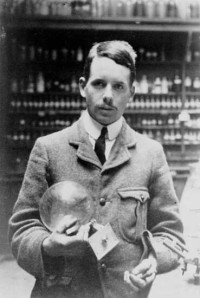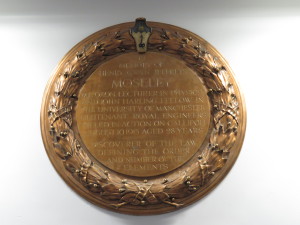
The death of Henry Moseley in August 1915 was lamented by the world’s scientific community. Isaac Asimov commented that Moseley’s death “might well have been the most costly single death of the War to mankind generally.”
Moseley came from a line of great scientific minds – his father was a protégé of Charles Darwin and founder of zoology at Oxford University, his paternal grandfather, Henry Moseley FRS, was professor of natural philosophy at King’s College, London, and his maternal grandfather, John Gwyn Jeffreys FRS, was a specialist on molluscs. Henry Moseley soon showed that he had a remarkable mind.
After finishing his degree at Oxford, he became a lecturer in physics at the University of Manchester, which was a leading hothouse of scientific research, and began work under the direction of Professor Ernest Rutherford. He soon demonstrated an enormous capacity for work with the combination of practical ability and philosophic insight necessary for discovery and problem solving attacking new and difficult problems.
Soon after his arrival in Manchester, Moseley began working with C. G. Darwin (grandson of Charles Darwin who was a lecturer at Manchester) on the X-ray spectra of the elements. Moseley observed and measured the X-ray spectra of chemical elements by diffraction in crystals. By doing so he discovered a systematic relation between wavelength and atomic number – now known as Moseley’s law. Before this, atomic numbers had been thought of as an arbitrary number, based on sequence of atomic weights. Moseley also predicted a number of missing elements and their periodic numbers in the Periodic Table. His method of X-ray crystallography was able to resolve problems which had baffled chemists for a number of years, but through Moseley’s work elements in the periodic table could now be elucidated on the basis of atomic number.
In late November 1913, Moseley left Manchester to return to Oxford to live with his mother. There he worked in Oxford University laboratories, but supported himself by private means. In 1914 Moseley travelled with his mother to Australia to attend the meeting of the British Association. On his return to England he enlisted in the British Army and obtained a commission as lieutenant in the Royal Engineers and posted to Gallipoli. On August 10, 1915, Moseley was in the midst of sending a military order when a sniper’s bullet caught him in the head and killed him. He was 27.
Given all that he had accomplished at such a young age and in a career of only 40 months, many could not help but wonder what Moseley could have achieved had he not been killed. In a few short years he had explained the basis of the modern periodic table, predicted the elements that would fill in the gaps and showed that x-rays could be a supreme analytical tool.
His death led the British government to establish a new policy barring the country’s most prominent scientists from engaging in active combat duty.
His friends and scientific admirers in many countries united to erect a memorial tablet in the physical laboratory of the University of Manchester.
